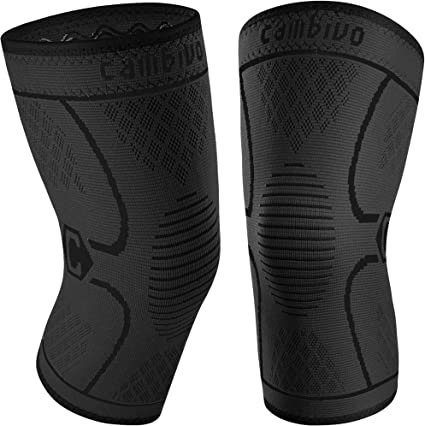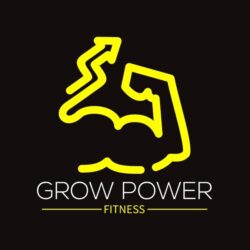In this comprehensive guide, we’ll delve into the world of powerlifting and explore the intricacies of a power lift workout. Powerlifting is a strength sport that focuses on three primary lifts: squat, bench press, and deadlift. These compound movements test an athlete’s raw strength and are performed with maximum effort. Whether you’re a seasoned powerlifter or a beginner looking to enhance your strength, this article will provide valuable insights, tips, and a step-by-step breakdown of a power lift workout.
Table of Contents
Introduction to Powerlifting
1.1 What Is Powerlifting?
1.2 History of Powerlifting
Benefits of Powerlifting
2.1 Strength Gains
2.2 Muscle Development
2.3 Improved Body Composition
Getting Started with Powerlifting
3.1 Selecting the Right Gym
3.2 Essential Equipment
3.3 Proper Warm-Up
The Power Lift Workout Routine
4.1 Squat
4.2 Bench Press
4.3 Deadlift
4.4 Accessory Exercises
Nutrition for Powerlifters
5.1 Macronutrients
5.2 Meal Timing
5.3 Supplements
Injury Prevention and Recovery
6.1 Proper Form
6.2 Rest and Sleep
6.3 Stretching and Mobility
FAQs (Frequently Asked Questions)
7.1 What Is the Difference Between Powerlifting and Weightlifting?
7.2 How Often Should I Do a Power Lift Workout?
7.3 What Are Some Common Powerlifting Injuries and How Can I Avoid Them?
7.4 Is Powerlifting Suitable for Women?
7.5 Can Powerlifting Help with Fat Loss?

Knee Wraps (Pair) With Strap for Squats, Weightlifting, Powerlifting, Leg Press, and Cross Training – Flexible 72 inch Knee Wraps for Squatting – For Men & Women
1. Introduction to Powerlifting
What Is Powerlifting?
Powerlifting is a strength sport that revolves around three fundamental lifts: squat, bench press, and deadlift. Athletes compete to lift the heaviest weights possible in each of these movements, with their combined total determining the winner of a competition. It’s not just about brute force; powerlifters must also demonstrate impeccable technique to succeed.
History of Powerlifting
The history of powerlifting dates back to the 1950s when it emerged as a competitive sport. Over the years, it has evolved, with various organizations and federations governing the sport and setting competition standards. The sport’s history is rich with legendary athletes and moments that have shaped its development into the popular strength discipline it is today.
2. Benefits of Powerlifting
Strength Gains
One of the primary benefits of powerlifting is the substantial improvement in overall strength it offers. Regularly lifting heavy weights can lead to significant strength gains. This increased strength extends beyond the powerlifting platform and can enhance performance in various other sports and daily life activities.
Muscle Development
Powerlifting not only enhances strength but also promotes muscle development. The compound movements engaged in powerlifting work multiple muscle groups, leading to muscle hypertrophy. This means you’ll not only become stronger but also more muscular, which can positively impact your physique.
Improved Body Composition
Engaging in powerlifting can lead to a positive change in body composition. It helps reduce body fat percentage while increasing lean muscle mass. As your strength and muscle mass increase, your metabolism becomes more efficient, making it easier to maintain a healthy body composition.
3. Getting Started with Powerlifting
Selecting the Right Gym
Choosing the right gym is crucial when embarking on your powerlifting journey. Look for a facility that provides the necessary equipment, including power racks, benches, and a variety of barbells and weights. Additionally, a supportive community of fellow lifters can provide motivation and guidance as you progress.
Essential Equipment
To excel in powerlifting, you’ll need specific equipment, such as powerlifting shoes, a lifting belt, and knee sleeves. These aids can enhance your performance and safety by providing stability and support during heavy lifts. Investing in quality equipment is essential for long-term progress and injury prevention.
Proper Warm-Up
A thorough warm-up is essential before every power lift workout. It prepares your body for the intense lifts ahead and reduces the risk of injury. Your warm-up routine should include dynamic stretches, mobility exercises, and gradually increasing the weight load to acclimate your muscles and joints to the demands of lifting.

CAMBIVO 2 Pack Knee Braces for Knee Pain, Knee Compression Sleeve for Men and Women, Knee Support for Meniscus Tear, Running, Weightlifting, Workout, ACL, Arthritis, Joint Pain Relief
4. The Power Lift Workout Routine
Squat
The squat is one of the foundational powerlifting movements. It targets your lower body and core strength. To excel in squats, focus on proper squat form, including maintaining a neutral spine, tracking your knees over your toes, and engaging your core. Gradually increase the weight to build strength and confidence in this essential lift.
Bench Press
The bench press is crucial for developing upper body strength, particularly in the chest, shoulders, and triceps. Concentrate on proper bench press technique, including maintaining a stable arch in your lower back, controlled descent and ascent of the bar, and a strong grip on the barbell. Incrementally increasing the weight will help you push your limits safely.
Deadlift
The deadlift is a full-body lift that tests your overall strength. It engages the muscles in your lower back, glutes, hamstrings, and traps. Mastering deadlift form is essential to prevent injuries and lift heavy weights effectively. Pay close attention to your hip and spine alignment, as well as the bar path during the lift.
Accessory Exercises
Incorporate accessory exercises like lunges, rows, and pull-ups into your routine to strengthen muscles that support your primary lifts. These exercises can address muscle imbalances and enhance overall stability and performance.
5. Nutrition for Powerlifters
Macronutrients
A balanced diet with the right macronutrient ratios is essential for powerlifters. Ensure you consume adequate protein to support muscle repair and growth, carbohydrates for energy, and healthy fats for overall health. Tracking your macros can help you optimize your nutrition for training and recovery.
Meal Timing
Timing your meals around your workouts can optimize your performance and recovery. Pre-workout and post-workout nutrition are particularly important. Consuming a combination of protein and carbohydrates before training can provide energy, while post-workout nutrition aids in muscle recovery.
Supplements
Consider supplementing with protein powder, creatine, and other supplements to meet your nutritional needs and enhance your powerlifting performance. These supplements can provide convenience and support your training goals when incorporated into a balanced diet.

ATERCEL Workout Gloves for Men and Women, Exercise Gloves for Weight Lifting, Cycling, Gym, Training, Breathable and Snug fit
6. Injury Prevention and Recovery
Proper Form
Maintaining proper form during lifts is critical to prevent injuries. Focus on technique, and consider working with a coach to improve your form. Address any form breakdowns promptly to avoid overuse injuries.
Rest and Sleep
Adequate rest and quality sleep are crucial for recovery and muscle growth. Prioritize sleep and allow your body to heal between workouts. Consistently getting enough rest ensures you can perform at your best during training sessions.
Stretching and Mobility
Incorporate stretching and mobility exercises into your routine to improve flexibility and reduce the risk of injuries. Target tight muscles and joints to enhance your range of motion, which can improve your lifting technique and overall performance.
7. FAQs (Frequently Asked Questions)
What Is the Difference Between Powerlifting and Weightlifting?
Powerlifting focuses on three primary lifts (squat, bench press, and deadlift), while weightlifting consists of two lifts (snatch and clean and jerk). Both sports require strength, technique, and dedication but emphasize different movements.
How Often Should I Do a Power Lift Workout?
The frequency of power lift workouts depends on your training level. Beginners may start with 2-3 times a week to allow for adequate recovery. Advanced lifters may train 4-5 times a week but should prioritize recovery and listen to their bodies.
What Are Some Common Powerlifting Injuries and How Can I Avoid Them?
Common powerlifting injuries include strains, sprains, and overuse injuries. To avoid them, prioritize proper form, progressively increase weights, warm up adequately, and incorporate accessory exercises to address weak points.
Is Powerlifting Suitable for Women?
Absolutely! Powerlifting is an inclusive sport, and women can excel in it. It offers numerous benefits, including increased strength, confidence, and the opportunity to compete at various levels.
Can Powerlifting Help with Fat Loss?
While powerlifting is not primarily a fat loss-focused activity, it can indirectly support fat loss goals. Building lean muscle mass through powerlifting increases your metabolism, making it easier to maintain a healthy body composition when combined with a balanced diet.

ihuan Ventilated Weight Lifting Gym Workout Gloves with Wrist Wrap Support for Men & Women, Full Palm Protection, for Weightlifting, Training, Fitness, Hanging, Pull ups
